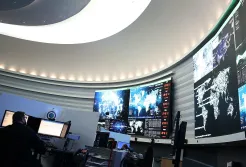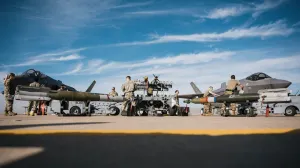Saltzman: Space Force underfunded for space control, other new missions

The Space Force intends to make defending the military from on-orbit threats a top priority in the coming years. But the service’s top official warned lawmakers that the mission — coupled with a slew of other additional requirements — is challenged by limited resources.
“Despite the dramatic rise in threats and increasing importance of space over the last few budget cycles, the Space Force has experienced shrinking resources. This disconnect between value and investment creates risk for our nation,” Chief of Space Operations Gen. Chance Saltzman said Tuesday during a Senate Armed Services Committee hearing. “Further exacerbating the situation, the Space Force has been asked to accept new responsibilities and missions forcing tough choices between delayed readiness, reduced capacity and vulnerabilities.”
The Space Force has recently named “space control” as its newest and most important core function. As outlined in the Space Warfighting Framework released in April, the mission requires capabilities and guardians that conduct orbital, electromagnetic and cyber warfare operations to achieve “space superiority” by protecting on-orbit assets and military personnel from an adversary’s space-enabled attack.
Saltzman told senators that unlike its other core functions that require modernization of systems, space control calls for capabilities and infrastructure to be created entirely from scratch — a task he said would be the Space Force’s top priority in fiscal 2026.
However, the service would be unable to achieve that with current funding levels and personnel without experiencing negative impacts to its other mission areas, he said.
In his written testimony, Saltzman explained that 78 percent of the Space Force’s budget is dedicated to delivering capability to the entire joint force — leaving less than a quarter of the service’s funds available for developing space control.
“At present, we do not have the full set of capabilities necessary to secure the space domain at the scale we need to assure joint force success,” Saltzman said. “These decisions have disproportionately impacted the [Space Force’s] ability to meet its obligations to the nation.”
Compounding the issue are a number of novel mission areas given to the Space Force in the last three years. Along with space control, the service is working on transferring ground- and air-moving target indicator systems to space, developing modeling and simulation tools, increasing its launch cadence and taking a lead role in President Donald Trump’s Golden Dome missile defense shield.
“There’s a lot of new equipment, there’s new training, there’s new people. We can’t just take what we have and presume that we can gain space superiority with that equipment. That new equipment requires new resources, and so that’s where the disconnect comes,” Saltzman said. “We are not adequately funded for new missions that I’ve been given in space superiority.”
As the Defense Department’s newest and smallest service, the Space Force’s funding accounts for only about three percent of the entire Pentagon’s budget allocations. Officials have previously said that fiscal constraints caused by repeated continuing resolutions and FY25 funding caps imposed by the Fiscal Responsibility Act have stifled the service’s growth.
At the same time, the Trump administration’s ongoing push to cut excess spending and reduce workforce across the federal government could further impact the Space Force’s efforts to develop and buy new capabilities, Saltzman said.
He told lawmakers that the service has lost almost 14 percent of its civilian employees to early retirement and deferred-resignation programs — more than what officials previously estimated. Civilians make up over one-third of the Space Force’s 17,000 personnel, and they mainly hold roles inside the acquisition community.
“I’m worried about replacing that level of expertise in the near term, as we try to resolve it and make sure we have a good workforce doing that acquisition work,” Saltzman said.






